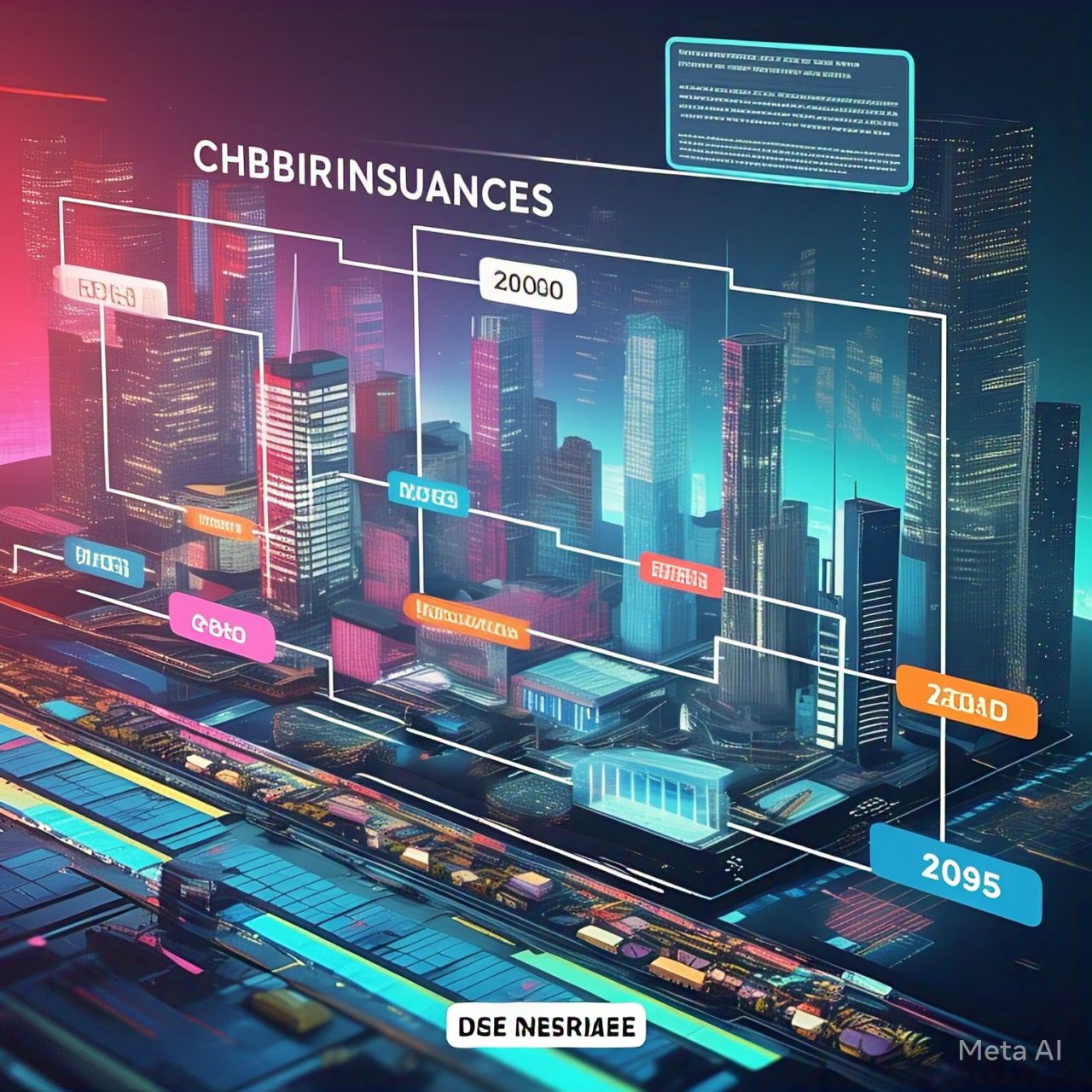The insurance industry, traditionally known for its paperwork-heavy processes and slow claim settlements, is undergoing a major digital transformation. With the rise of digital-first insurance providers, the industry is shifting from outdated, manual systems to technology-driven, customer-centric solutions.
Digital-first insurance providers leverage artificial intelligence (AI), automation, big data, and cloud computing to offer seamless experiences, faster claims processing, and personalized policies. This transformation is not just about moving online—it’s about rethinking the entire insurance value chain to create more efficient, flexible, and customer-friendly services.
In this article, we will explore the factors driving the rise of digital-first insurers, their key benefits, challenges, and future trends, and how this shift is reshaping the global insurance landscape.
What Are Digital-First Insurance Providers?
Digital-first insurance providers, often referred to as InsurTechs, are companies that prioritize digital solutions over traditional brick-and-mortar operations. Unlike legacy insurers that have adapted digital tools over time, digital-first insurers are built from the ground up with a technology-first approach.
Key characteristics of digital-first insurance providers include:
✔ Fully online policy management – Customers can buy, renew, and manage policies digitally.
✔ AI-driven underwriting – Automated risk assessment and pricing based on data analytics.
✔ Instant claims processing – Use of AI and blockchain to settle claims in real time.
✔ Personalized policies – Tailored coverage based on individual behavior and preferences.
✔ Integration with digital ecosystems – Partnerships with e-commerce, fintech, and mobility platforms.
Examples of Digital-First Insurance Providers:
🔹 Lemonade – AI-powered home and renters insurance with instant claims approvals.
🔹 Root Insurance – Usage-based auto insurance that adjusts premiums based on driving behavior.
🔹 Oscar Health – A tech-driven health insurance provider offering telemedicine and wellness incentives.
🔹 Next Insurance – Digital-first business insurance tailored for small enterprises.
Key Drivers Behind the Shift to Digital-First Insurance
Several factors are accelerating the transition from traditional insurers to digital-first models:
1. Changing Consumer Expectations
Modern consumers demand instant, seamless, and mobile-friendly experiences. Just as they expect one-click shopping from Amazon or instant payments via PayPal, they now expect the same level of convenience from insurers.
🔹 Stat: A recent survey found that 74% of customers prefer digital interactions when dealing with insurers.
2. Advancements in AI and Automation
AI-powered chatbots, machine learning algorithms, and automation have made it possible to process claims, assess risk, and provide customer support instantly.
🔹 Example: Lemonade uses AI-driven underwriting and claims processing, enabling payouts within minutes.
3. The Rise of Usage-Based and On-Demand Insurance
Traditional one-size-fits-all policies are being replaced by usage-based and on-demand insurance models that adapt to a customer’s needs.

🔹 Example: Root Insurance calculates car insurance premiums based on real-time driving data rather than demographics.
4. Data Analytics and Personalization
With big data analytics, insurers can now offer hyper-personalized policies based on real-time data.
🔹 Example: Health insurers use wearable fitness data to provide discounted premiums for active customers.
5. Digital Ecosystem Integration
Insurers are embedding their services into digital platforms, e-commerce sites, and fintech apps to make insurance more accessible.
🔹 Example: Tesla offers embedded auto insurance within its vehicle purchase platform.
Key Benefits of Digital-First Insurance Providers
1. Faster Claims Processing
Traditional insurers often take weeks or months to process claims due to manual paperwork and complex approval processes. Digital-first insurers, however, use AI and automation to settle claims within minutes.
🔹 Example: Lemonade’s AI-powered system paid a claim in just 3 seconds, setting a new industry standard.
2. Lower Operational Costs
By eliminating physical branches and manual processing, digital insurers can operate at a lower cost, allowing them to offer more competitive premiums.
🔹 Stat: Studies show that InsurTechs operate at 30-50% lower costs than traditional insurers.
3. Improved Customer Experience
Customers can purchase, renew, and manage policies instantly via mobile apps, reducing frustration and increasing satisfaction.
🔹 Example: Oscar Health provides a user-friendly app that allows members to access doctors, track health spending, and manage policies easily.
4. Personalized and Flexible Coverage
Digital insurers use AI and behavioral analytics to tailor policies to an individual’s lifestyle and risk profile.
🔹 Example: Metromile offers pay-per-mile auto insurance, charging customers based on how much they drive.
5. Greater Transparency and Trust
Blockchain technology is helping digital insurers create transparent and tamper-proof policies, reducing fraud and disputes.
🔹 Example: Smart contracts can automatically execute claims when predefined conditions are met, eliminating lengthy disputes.
Challenges Faced by Digital-First Insurance Providers
1. Regulatory and Compliance Issues
Insurance is heavily regulated, with different laws across regions. Digital insurers must navigate licensing, data privacy laws, and cybersecurity regulations to operate legally.
🔹 Example: GDPR in Europe imposes strict data protection rules, affecting how insurers handle customer data.
2. Cybersecurity Risks
As digital insurers handle large amounts of sensitive data, they are prime targets for cyberattacks and data breaches.
🔹 Example: Insurers must invest in advanced encryption, cybersecurity frameworks, and fraud detection AI.
3. Customer Trust and Adoption
While younger consumers embrace digital insurance, older generations still prefer traditional agents and face-to-face interactions.
🔹 Example: Some insurers offer hybrid models, combining digital platforms with human agents for support.
4. Market Competition
The InsurTech sector is growing rapidly, leading to intense competition. New startups must differentiate themselves with unique offerings, superior AI capabilities, or specialized coverage options.
Future Trends in Digital-First Insurance
1. AI-Driven Predictive Insurance
AI will continue to enhance risk prediction, allowing insurers to offer more precise and proactive coverage.
🔹 Example: AI will predict health risks, home damages, and auto accidents, adjusting premiums accordingly.
2. Embedded Insurance Growth
More companies will embed insurance directly into products and services, making coverage an effortless add-on.
🔹 Example: Airlines, e-commerce platforms, and car manufacturers will offer built-in insurance packages.
3. Blockchain and Smart Contracts
Blockchain will streamline claims processing, enhance transparency, and reduce fraud.
🔹 Example: Smart contracts will enable instant payouts when claims criteria are met.
4. Expansion of Micro-Insurance and Subscription Models
Digital insurers will introduce affordable micro-insurance and monthly subscription plans for greater flexibility.
🔹 Example: Low-income populations can access micro-health and life insurance via mobile apps.
5. AI-Powered Virtual Assistants
AI-driven chatbots and virtual assistants will handle customer inquiries, recommend policies, and assist with claims 24/7.
🔹 Example: Voice-based AI assistants may become the new insurance agents.
Conclusion
The shift toward digital-first insurance providers is revolutionizing the industry, offering faster claims, lower costs, personalized coverage, and seamless customer experiences. As AI, blockchain, and big data continue to evolve, digital insurers will become smarter, more adaptive, and more embedded into everyday life.
While challenges like regulatory compliance and cybersecurity risks remain, the future of insurance is undeniably digital. Traditional insurers must adapt or risk being left behind as digital-first models redefine how consumers buy, manage, and experience insurance.
For businesses and consumers alike, the digital-first insurance revolution promises a simpler, faster, and more accessible future for insurance.















